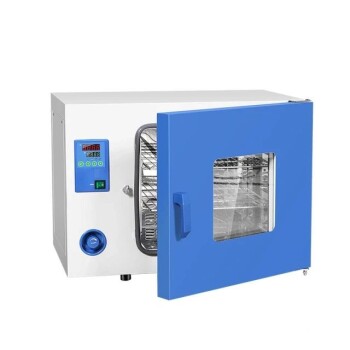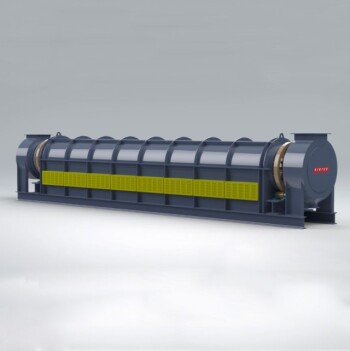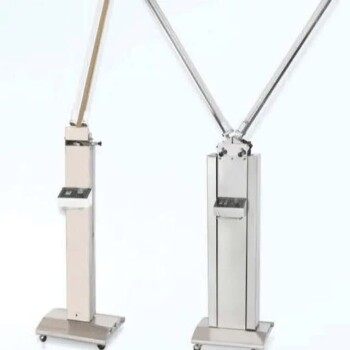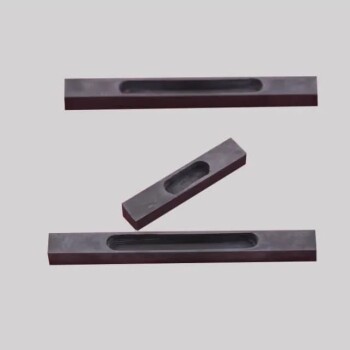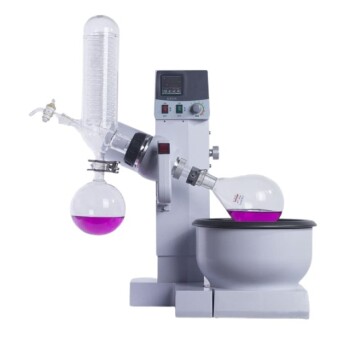Burn off ovens, also known as burn out ovens, are specialized industrial equipment designed to remove organic materials such as paint, powder coatings, or other residues from metal hardware, tools, and equipment. They are widely used in industries like powder coating, manufacturing, and custom fabrication to clean hooks, racks, and other components that accumulate coatings during production processes. These ovens operate using pyrolysis, a controlled thermal decomposition process that breaks down organic materials without damaging the underlying metal. They are equipped with safety features like negative pressure environments and water suppression systems to prevent flare-ups or fires. Burn off ovens are essential for maintaining efficiency, prolonging equipment life, and ensuring consistent quality in industrial processes.
Key Points Explained:

-
Primary Purpose of Burn Off Ovens:
- Burn off ovens are primarily used to remove paint, powder coatings, and other organic residues from metal hardware, tools, and equipment.
- They are especially critical in industries like powder coating, where hooks, racks, and other fixtures accumulate coatings during the finishing process and require periodic cleaning.
-
Industries and Applications:
- Powder Coating Industry: Used to clean hooks and racks that hold parts during the coating process, ensuring they remain functional and free of buildup.
- Electric Motors and Tools Manufacturing: Helps clean components that accumulate coatings or residues during production.
- Plastics and Rubber Industries: Used to clean molds, tools, and other equipment that come into contact with organic materials.
- Custom Manufacturing: Supports cleaning of customized parts and fixtures used in various production processes.
-
How Burn Off Ovens Work:
- Pyrolysis Process: Burn off ovens use pyrolysis, a chemical decomposition process that occurs when organic materials are heated in an oxygen-controlled environment. The high temperatures break down the coatings into ash or gas without damaging the metal parts.
- Temperature Control: The oven operates at temperatures high enough to decompose organic materials but low enough to prevent damage to the metal components or flare-ups.
-
Safety Features:
- Negative Pressure Environment: The oven operates under slightly negative pressure or vacuum conditions to reduce the risk of ignition.
- Water Suppression System: A fine mist of water is injected if temperatures rise too high, turning into steam to displace oxygen and prevent fires.
-
Benefits of Using Burn Off Ovens:
- Efficiency: Provides a quick and effective method for cleaning coated parts and fixtures, reducing downtime in production lines.
- Cost Savings: Extends the lifespan of hooks, racks, and other equipment by removing coatings that can cause wear and tear.
- Environmental Safety: The controlled pyrolysis process minimizes the release of harmful fumes and reduces the need for chemical cleaning agents.
- Consistency: Ensures uniform cleaning of parts, which is critical for maintaining quality in industrial processes.
-
Key Considerations for Purchasing Burn Off Ovens:
- Size and Capacity: Choose an oven that can accommodate the size and volume of parts or fixtures needing cleaning.
- Temperature Range: Ensure the oven can reach the required temperatures for the specific materials being cleaned.
- Safety Features: Look for ovens with robust safety systems, such as negative pressure environments and water suppression.
- Energy Efficiency: Consider models designed to minimize energy consumption while maintaining high performance.
- Durability: Select ovens made from high-quality materials that can withstand frequent use and high temperatures.
-
Maintenance and Operational Tips:
- Regularly inspect and clean the oven to prevent buildup of ash or debris.
- Monitor temperature controls and safety systems to ensure they are functioning correctly.
- Train operators on proper usage and safety protocols to avoid accidents or equipment damage.
- Schedule routine maintenance to keep the oven in optimal working condition.
In summary, burn off ovens are indispensable tools for industries that rely on clean, residue-free equipment and components. By understanding their applications, working principles, and benefits, purchasers can make informed decisions when selecting the right oven for their specific needs.
Summary Table:
| Aspect | Details |
|---|---|
| Primary Purpose | Removes paint, powder coatings, and organic residues from metal hardware. |
| Industries | Powder coating, manufacturing, plastics, rubber, and custom fabrication. |
| How They Work | Uses pyrolysis for thermal decomposition; includes safety features. |
| Key Benefits | Efficiency, cost savings, environmental safety, and consistent cleaning. |
| Purchase Considerations | Size, temperature range, safety features, energy efficiency, durability. |
| Maintenance Tips | Regular cleaning, safety system checks, operator training, routine upkeep. |
Ready to enhance your industrial processes with a burn off oven? Contact us today for expert guidance!
